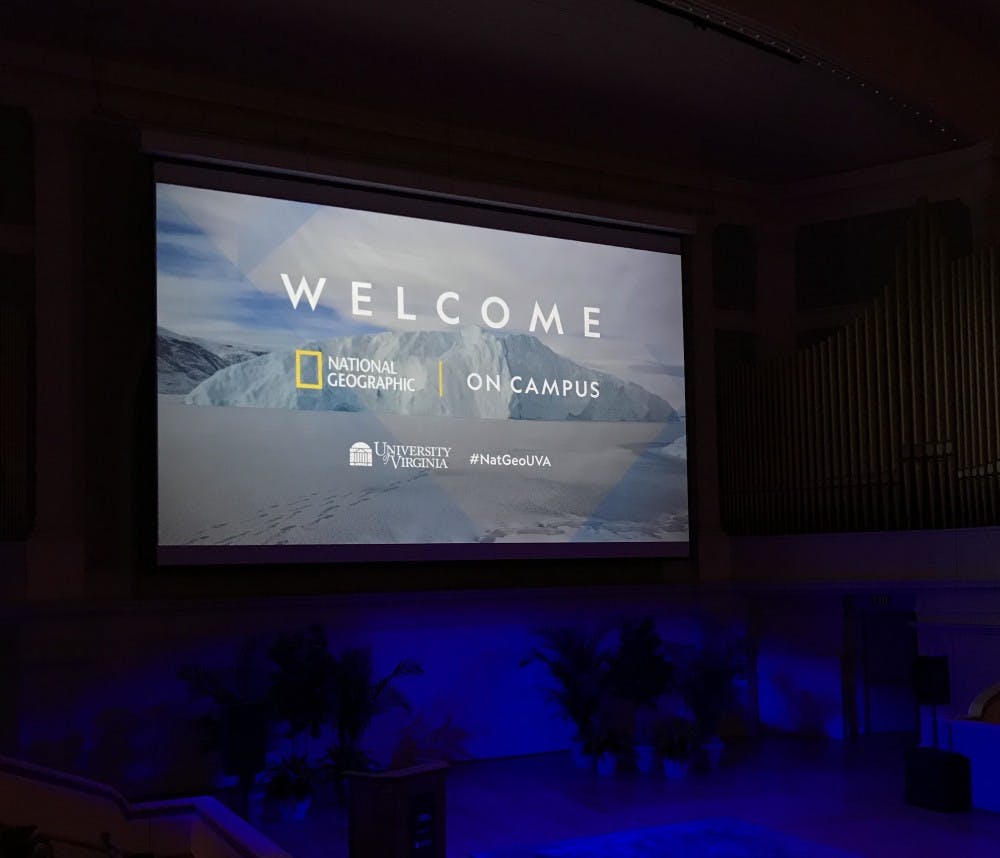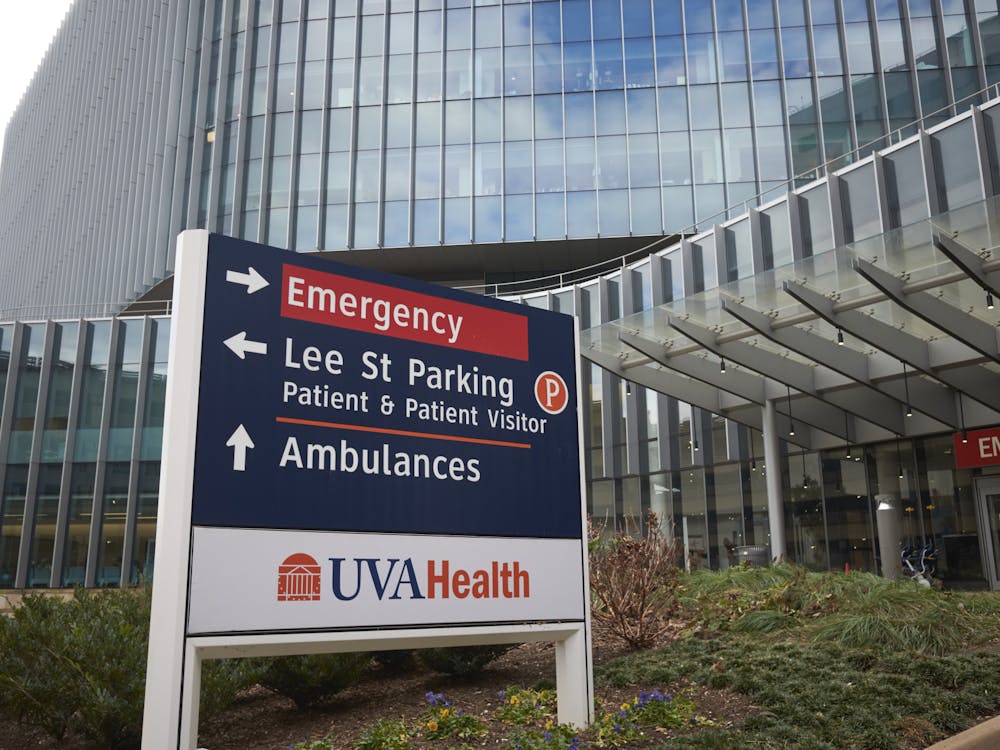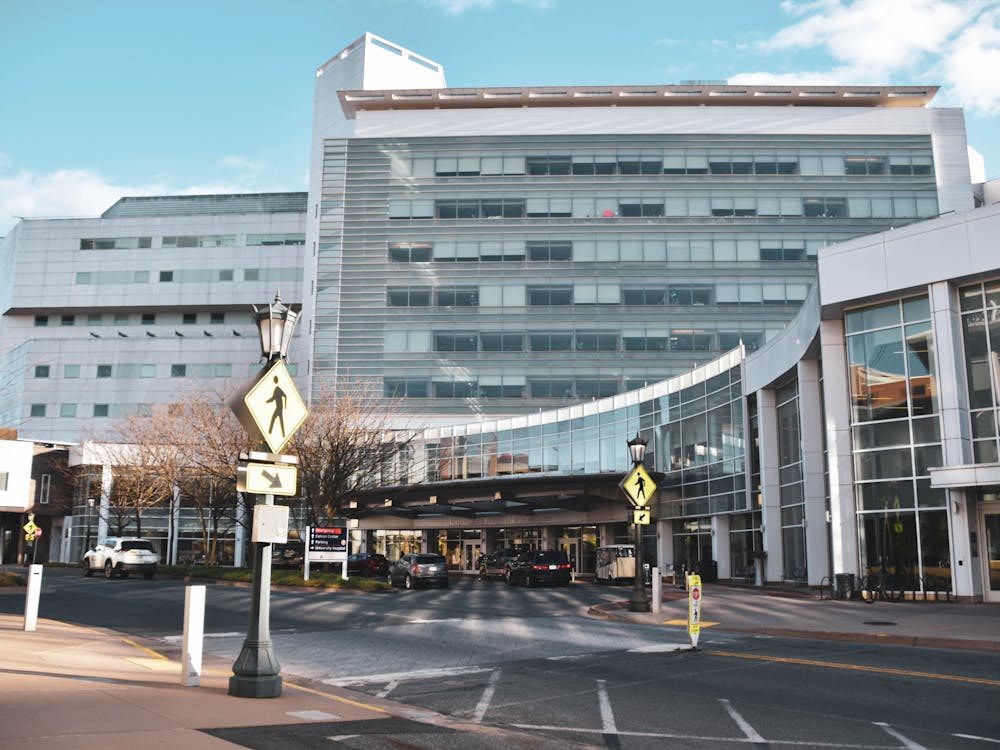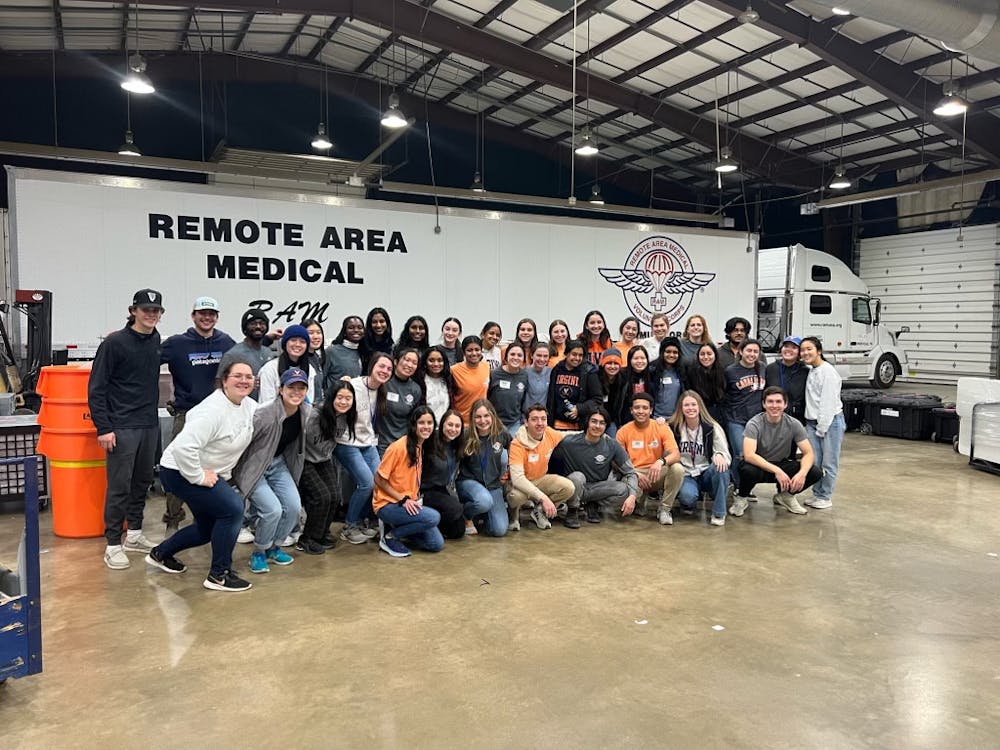National Geographic visited Grounds Friday and Saturday to offer workshops and lectures focused on scientific and cultural topics, environmental resilience and storytelling. These events gave students the opportunity to practice forming and sharing stories, as well as learn about the impacts of climate change.
This event was National Geographic’s second On Campus event, a collection of programs tailored specifically for university audiences. The first National Geographic On Campus event was held at the University of Miami in Nov. 2018. All lectures and workshops during the event were free of charge to students, faculty and staff.
Friday’s main event was called the “Science and Storytelling Symposium” in Old Cabell Hall. The symposium was comprised of a series of panels and conversations on a variety of cultural and environmental subjects led by National Geographic explorers and University faculty.
The first presentation shed light on various waterway conservation projects in Virginia, New England and Peru, as well as phenomena that pose threats to bodies of water, such as deforestation, fertilizer runoff and sea levels rising. The speakers also emphasized cultural ties communities have with waterways. Photographer Greg Kahn spoke about people who live on the Eastern Shore of Maryland whose homes are flooding due to rising sea levels.
In addition to the panel on waterways, faculty and explorers discussed how to make cities environmentally sustainable and cultural resilience in the face of climate change.
There was also a performance of an opera that digitally and musically portrayed changing communities and landscapes in the Arctic.
The large focus of the event was environmental resilience. Lillygol Sedaghat, a panelist in the talk “Resilient Cities for the 21st Century,” shared her story of documenting waste management in Taiwan. Now as spokesperson for National Geographic’s Planet or Plastic? campaign, she is trying to bring people’s attention to their relationship with waste — especially plastic — to make a difference at home.
"The most important thing is that I really want people to recognize that every single decision that they make has an impact on someone, somewhere or something," Sedaghat said.
The final event of the symposium was a conversation titled called “Picturing Race at National Geographic and UVA,” between Susan Goldberg, editor-in-chief of the National Geographic magazine, and Assoc. Prof. of History John Edwin Mason. The conversation focused on the power of the image and how certain photographs and captions from both the University’s and National Geographic’s past portrayed people of color in a degrading light, as well as the way those images contributed to harmful perceptions of people of color from the United States and abroad.
“Just as our pictures are lasting, the pictures from University of Virginia and from Charlottesville here are incredibly lasting with the messages they tell and what they say about the society at the time,” Goldberg said.
Such images were projected behind the speakers and included photographs from National Geographic’s archives and from the University’s past yearbooks.
“At National Geographic, up until really the time of the Civil Rights Movement, people of color in other countries were exoticized or other-ized … and people of color in the United States were ignored or sometimes demeaned,” Goldberg said.
Mason and Goldberg also discussed the ways in which the University and National Geographic have changed to address their damaging past. Goldberg explained that National Geographic has changed by hiring a more diverse staff. Mason said that one change is the University’s offering courses that explore inequality in the United States. However, he emphasized that the University should be pushed further and mentioned specifically that the University does not offer a living wage to its lowest-earning employees and has a powerful impact on the housing market in Charlottesville.
“How do we become — instead of a bastion of white supremacy — a bastion of justice?” Mason said. “The University has been very good recently at confession … The conversation around atonement has barely even begun.”
Christian Jung, first-year Engineering student, attended the talk and said that while the University and National Geographic certainly acknowledged their controversial pasts with regards to race, both still struggle with understanding the full extent of its consequences.
“In certain respects, they're pretty similar in that they both kind of have this past that they're ashamed of, and they kind of struggle with how they can talk about it so that they can improve,” Jung said.
After the conversation, President Jim Ryan gave the closing remarks to Friday’s symposium.
"My hope is that you leave here today looking to build new bridges and inspired by the spirit of fearless exploration and discovery, including of our own past," Ryan said.
That evening, astronomy professor Edward Murphy led a tour of the Leander McCormick Observatory, in which he discussed the history of the observatory and showcased its historic telescope.
The following day of the On Campus event was devoted to workshops. University faculty and National Geographic representatives led seminars in Newcomb Hall, Wilson Hall and Clemons Library. These workshops were more intimate than Friday’s symposium — some allowed only 10 participants — and ranged in ecological, artistic and literary topics, including journalism and climate change simulations.
Lara Musser, doctoral candidate in the English department, attended the morning seminar titled “Writing the Nat Geo Way,” led by John Hoeffel, executive editor for science of National Geographic Magazine. This workshop examined how National Geographic chooses and reports on its topics for stories. She said she enjoyed the intimacy of the five-person seminar and learning about specific articles from the editor’s perspective.
“It was such a treat to hear all the inside story of some of this incredible journalism,”
Musser said. “It's kind of inspiring because you're like, ‘Oh, this is like a person, I'm also a person. Maybe someday I could do this.’”
Jennifer Kingsley, a National Geographic explorer who was a speaker in the panel about cultural resilience and led a journalism workshop, builds her work around individual people. She specializes in telling personal stories and emphasizes the importance of conversing with those who have different perspectives. Although she works all around the globe, she said that engaging stories can be found even in our own communities.
"It's not necessary to travel a big distance geographically in order to travel a big distance emotionally or psychologically,” Kingsley said. “For people who are storytelling, some of the most amazing stories are just at arm’s length."





